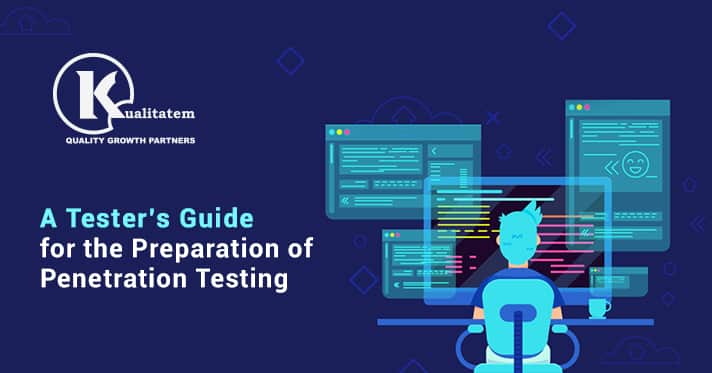A Tester’s Guide for the Preparation of Penetration Testing

- December 12, 2019
- HibaSulaiman
Penetration testing is not an easy job. It’s much more than simply using tools and hacking into systems. It requires a lot of experience, skills and most importantly, a well-defined plan. Testers need to know what vulnerabilities to look for, where to find them, and how can they be exploited.
Rest assured, penetration testing is not a dark art. A good penetration testing company hires certified ethical hackers who are strictly monitored and are well-aware of the rules and regulations. Along with rules and regulations, testers must also follow specific guidelines when going through this process.
1) Approval and Scope
First and foremost, testers need formal approval from the client organization to perform the penetration test. Simulating a cyberattack on the organization’s systems won’t be very pleasing for the senior staff. Along with the approval, this process should involve a thorough discussion between the senior staff and the testers, laying out which parts of the organization’s system need to be tested. Following are the four options:
- Network penetration testing
- Web app penetration testing
- Wireless penetration testing
- Simulated phishing
These discussions help clearly define the scope of testing and the rules of engagement. It’s important to communicate to the testers what their boundaries are in a documented agreement so that you know who’s responsible if a problem arises.
2) Decide How the Test will be Conducted
There are several approaches when conducting a penetration test.
- Zero-knowledge testing: That’s right, testers start with no substantial data provided. Thus, forcing them to seek out information through publicly available sources such as the organization’s website or social media.
- Partial knowledge testing: Testers are provided a limited amount of information about the target such as IP addresses, network configurations, target’s systems, physical location, etc. This is the most commonly conducted test type that often proves to be the most effective and economical.
- Full knowledge testing: Testers are provided with all the information they want. This approach is usually only used by internal testers performing regular assessments of their organization’s systems.
- Blind testing: With no knowledge of the organization’s administrators, testers assess whether admin staff detects the intrusion as they monitor their responses.
- Double-blind testing: Neither the security team nor the administrators are told about the penetration test.
3) Selecting the Testing Team
Defining tasks and appropriate measures to accomplish them doesn’t get them done. The team does. Ensure that the team is selected wisely, keeping in mind the target, scale of testing, and individual capabilities. This will help decide who’s most suitable for the job.
4) Access
Testing is most effective when done in a natural environment. However, testers sometimes might need some help like asking the client organization to open firewall ports or enable particular services. Some testers might want to place someone inside the organization to monitor the test and enable the team to react quickly if business operations are affected.
How Does a Penetration Testing Company Help?
With the right tools, team, and plan in place, a good penetration testing company will help you in identifying the loopholes in your security and consult you through the process of strengthening it.
Conclusion
Taking the perspective of both client organization and penetration testing company in consideration, this article briefly discusses the major guidelines for the testers. A testing company can follow these instructions to better prepare for the tests while the client organization can learn how penetration testing is actually conducted.











